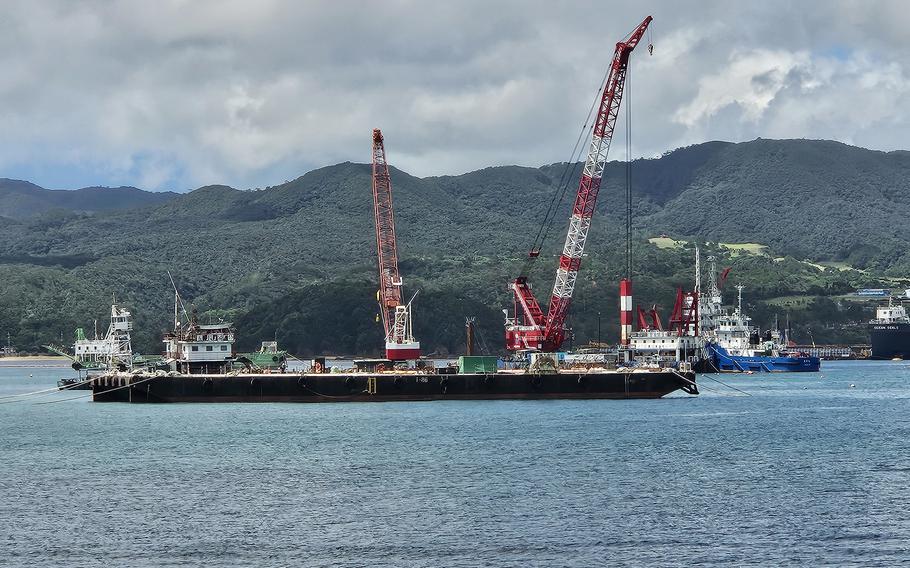Asia-Pacific
Okinawa loses final appeal in lawsuit over future Marine Corps airfield
Stars and Stripes January 21, 2025

A crane floats on Oura Bay at the site of a future U.S. Marine Corps runway at Camp Schwab, Okinawa, July 9, 2024. (Brian McElhiney/Stars and Stripes)
Japan’s Supreme Court recently denied Okinawa Gov. Denny Tamaki’s final legal challenge to stop construction at a future Marine Corps airfield in the island’s north.
The Tokyo court on Thursday rejected an appeal in a lawsuit filed by Okinawa prefecture in September 2022 seeking to block changes to construction permits required by Japan’s Ministry of Defense to finish the project, according to the prefecture’s website.
The lawsuit was originally dismissed by a three-judge panel in Naha District Court in November 2023 after oral arguments in February, April and July that year. The prefecture appealed to the Fukuoka High Court, which also dismissed the case on Sept. 2.
The airfield is under construction at the Marines’ Camp Schwab on land reclaimed from Oura Bay to replace Marine Corps Air Station Futenma in densely populated Ginowan city. The U.S. and Japanese governments agreed to move the base in 1996, but the prefectural government has repeatedly delayed construction.
“It is extremely regrettable that the Supreme Court dismissed us without any concrete judgment, since we had expected them to make a fair and neutral judgment based on the essence of local autonomy guaranteed by the Constitution,” Tamaki wrote in a statement posted Monday on the prefecture’s website.
“However, as the governor, who has been entrusted by the citizens, my position against the construction of the new base in Henoko has not changed in the slightest,” he wrote.
The construction zone is divided into two main sections: 279 acres on Schwab’s north side and 91 acres in the south.
Work on the Oura Bay side, or north side, had been on hold since April 21, 2020, when Tamaki, citing safety and environmental concerns, refused to approve design changes meant to solidify the seabed.
He filed, and lost, three lawsuits, with defeats at the Supreme Court in August and September 2023.
Tetsuo Saito, at the time the Minister of Land, Infrastructure, Transport and Tourism, approved the construction permits on Dec. 28, 2023, after Tamaki ignored a deadline from Fukuoka High Court.
Construction in Oura Bay resumed on Jan. 10, 2024.
On Dec. 28, contractors hired by the Okinawa Defense Bureau, an arm of Japan’s Ministry of Defense, began ground improvement work to drive sand piles to ensure stability for the airfield, the bureau announced in a news release the previous day.
Construction on the project is expected to take until at least 2033 and cost the Japanese government nearly $6 billion, Defense Minister Gen Nakatani said at a news conference Jan. 10. The airfield may be ready for use by 2036, he said.
The most recent dismissal ends a series of 14 construction-related lawsuits filed by both sides since Nov. 17, 2015. The prefecture lost 10 lawsuits, settled three and withdrew one, according to the prefecture’s website.